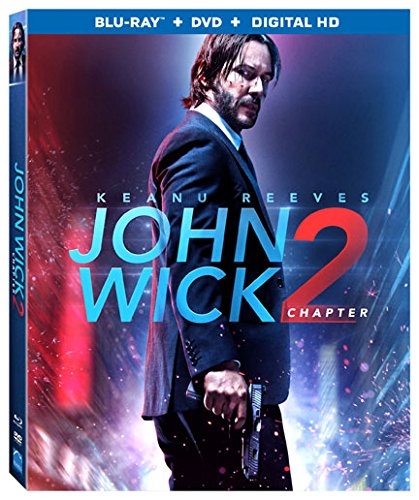The Welcome Return of the Action Movie
I was born in the early 80’s. Which means I first fell in love with movies in the mid-90’s. At the time, the theaters were packed with action movies and action movie stars. From the A-list action stars like Arnold Schwarzenegger, Sylvester Stallone, and Bruce Willis, to the B-grade martial arts stars like Jean-Claude Van Damme and Steven Seagal, there was no shortage of stars able to pull in the crowds at the box-office. Action movies were such a dominant genre that, after winning the Oscar for best actor in 1996, Nicolas Cage decided to star in three action movies in three years (The Rock, Con Air, and Face/Off).
But, a lot has changed in the 17 years since the 90’s came to a close. Advances in CGI opened the world of possibilities for filmmakers. This led to a radical increase in the number of comic book movies and other large spectacle blockbusters. The general public's demand for action started to be met by these big budget blockbusters. As big spectacle blockbusters grew in popularity and met the public's demand for action, action films fell out of style.
As time passed, action moves and action stars were relegated to the direct to video market. By the end of the 00’s, Jason Statham was the last remaining action move star, but not even his films were performing well; And, eventually his films were going straight to video.
While these films met the demand for action, they also came at a great cost.
THE PG-13 PROBLEM
To state the obvious, most comic-book movies and blockbusters are extraordinarily expensive to produce. As a point of reference, the cheapest film in the Marvel Cinematic Universe cost $130 million to produce. And the production budget doesn't factor in the marketing costs. When all is said and done, a film normally needs to make over twice its production budget in order to be profitable. These films have to appeal to a very broad audience in order to make back their budget. Therefore, the R rating becomes a liability.
When the market shifted towards CGI blockbusters and comic-book films, R-rated action films started to disappear. You can even see examples where previously R-rated franchises recent sequels were given a bigger budget with a PG-13 mandate. This meant a certain types of films, action sequences, and storytelling disappeared from theaters.
For several years, the action film all but disappeared.
WELCOME RETURN OF MID-BUDGET ACTON MOViES
All hope seemed lost for action movie fans until just a couple of years ago. Out of nowhere, a little film called John Wick came out. It was an original story, from a pair of first time directors, with a modest budget, and an A-list leading man who hadn't had a hit in a while. The movie was well received but, in the end, it made under $100 million globally. For a big budget blockbuster, that would be a disaster, but John Wick only cost $30 million to make. Without cracking $100 million, it was still profitable.
Whether intentional or not, over the last year, a series of R-rated action movies have come out. Last year, Gavin O'Connor, director of Warrior, released The Accountant, a thoughtful action film starring Ben Affleck, Jon Bernthal, and Anna Kendrick. Then, earlier this year, we saw John Wick: Chapter 2 come out. The sequel went on to make nearly double what the first film made with only a modest increase in the budget. This past weekend, Edgar Wright's Baby Driver was released in the United States. Then, later this month, the Charlize Theron led Atomic Blonde is coming out.
In the one sense, these are four very different films but, on another level, all four are R-rated, mid-budget, action-crime films made by quality directors. While the market may not be bombarded with a never-ending onslaught of action films like it was in the 90’s, it does mark the return of something missing from the market. For me, that's a good thing.






